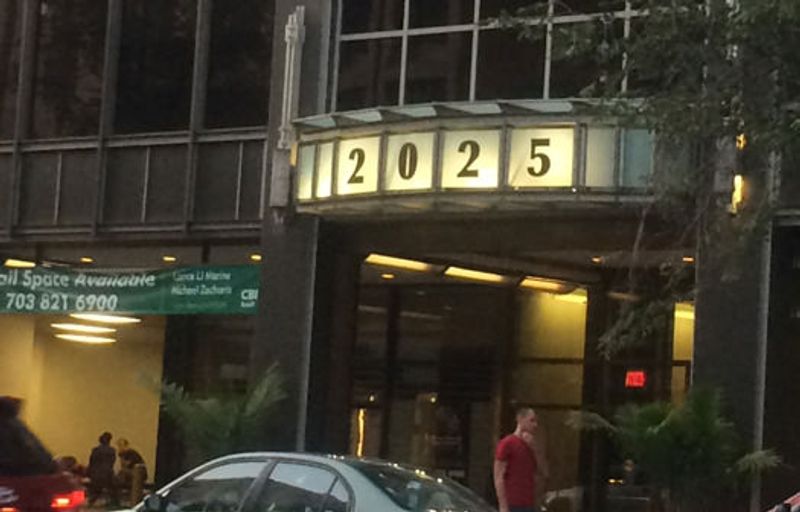Blog
Emil Guillermo on Labor Day, CNN, NPR, and a cross-country drive in the media
As we approach Labor Day, I ponder the map of my labor life, my resume, and realize it is the history of the boom and bust of the American economy.
Hired in good times, reduced in recessions. And, because I’m an Asian American, it all works in conjunction with that time honored employment lament, “Last hired, first fired.”

I worked at NPR when it was on M Street in D.C. Now it’s in the new NoMa district (North of Massachusetts), and it looks like a tech startup.

These days, while some tech folks may experience an economy on the rise, the indicators for journalism and the media business in general are not so bright. Last week, CNN’s Jeff Zucker announced that the cable network will have to do “less with less,” which means for some, just a slice of Don Lemon may have to do. The network announced the potential of layoffs among its 9,000 U.S. employees. How many get zapped will likely come after the success of the “voluntary buyout plan,” which encourages those over age 55 to leave.
It’s not exactly “forced retirement.” It’s more like, “you go first.”
Then the long knives appear.
Admittedly, I prefer getting my news on CNN. But all the corporate networks are beholden to the almighty dollar. That’s especially true for CNN after staving off Rupert Murdoch’s takeover bid for its parent company, Time Warner. Suddenly, CNN’s on a new mission. Now it must show shareholders it can surpass Murdoch’s rejected takeover bid of $85 a share.
Maybe it can happen without enlisting a Kardashian. Or a news show in the nude.
It’s not a good sign for the news business–especially for diversity in the news business. People of color are always affected first. Of course, a few hood ornaments will remain in full view at the different networks, with the notable exception of the de-ornamented Ann Curry. (Has anyone seen Ann lately? At Brad and Angelina’s wedding? At NBC? Anywhere?) With fewer veteran minorities employed, there are fewer advocates for news stories on diverse communities. “Doing less with less” isn’t just about shrinking news holes. It’s about the shrinking diversity in coverage and employment.
I lamented this fact at the recent Asian American Journalists Association convention, when I realized after some quick math that it had been 25 years since I was named a senior host of NPR’s “All Things Considered.”
It’s a modest achievement: the first Asian American to host NPR’s flagship program and the first Asian American male to host a regularly-scheduled national news show. But when Asian American invisibility is still a modern media issue, it may as well be like walking on the moon.
At the AAJA convention in Washington, I certainly wasn’t expecting a red carpet at the reception I attended in NPR’s brand spanking new hi-tech broadcast palace. But my hire had been a breakthrough for the broader Asian American community and for diversity. And it was due to the leadership at NPR at the time, Adam Clayton Powell III.
I stayed at NPR for two years (Powell was gone soon after I was hired). But since that time, as I spoke at the conference, no one present (not even an NPR reporter) could think of another Asian American who had been a permanent host of “All Things Considered.” Or if such a person exists, they certainly were keeping it a secret. Indeed, Arun Rath was named a host late last year, but that no one at a convention of Asian American journalists knew it says something.
This is not to say diversity hasn’t advanced at NPR and in public radio in general. There are actually more people of color than ever doing great work these days. You can actually hear genuine stories of accented communities.
But you can also still hear the other variety: white reporters giving their response/translation to diverse issues, as if such stories were true revelations.
Journalists of color live those stories. If they were employed in greater number in all media, the audience might know how all these “different” stories only show how much we all have in common.
But we’re still travelling in the slow lane.
Diversity is much harder to achieve with corporate induced shakeouts, buyouts, and layoffs.
Incidentally, that’s what happened to me. In the parlance of NPR, I was “riffed.” That’s the verbified acronym for “reduction in force.”
As a Labor Day treat, I wanted to share with you, my reader friends, my first and last stories at NPR.
The first was an essay on my cross-country drive with my infant daughter, the dog, the rat, and animal rights spouse.
My final words were on the subject listeners really wanted to know more about—why I pronounce my last name the way I do.
And just to show how long the fight for diversity has gone on, and how the fight and the media have changed, here is a link to the very first town hall held at the now defunct Freedom Forum in Arlington, Virginia. It was the house that Gannett and its late top exec Al Neuharth built. At the time, the traditional media was flush with cash. Diversity actually looked achievable in short order.

More than twenty years later, it’s been a long haul. And we’re still fighting, as we approach another Labor Day and take time off to think about how the barriers and limitations we still face can impact every aspect of our lives.

Emil Guillermo is an independent journalist/commentator. Updates at www.amok.com. Follow Emil on Twitter, and like his Facebook page.
The views expressed in his blog do not necessarily represent AALDEF’s views or policies.
Read Emil's full bio →